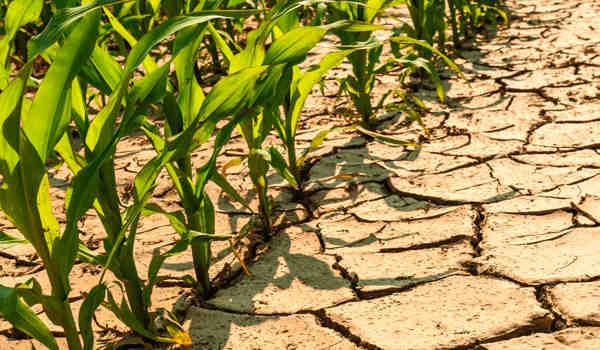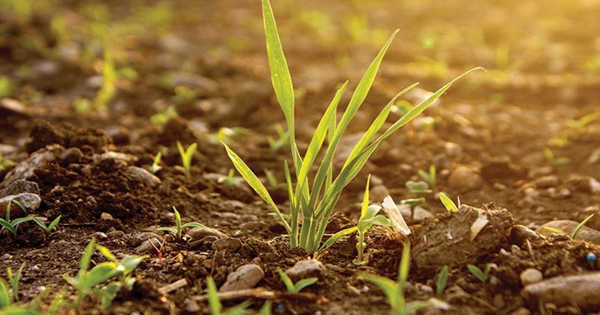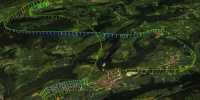Researchers have developed a method to protect seeds from the stress of water scarcity during their critical germination phase, as well as to provide extra nutrition to the plants. The process, which is simple and inexpensive, could be used in arid regions to facilitate agriculture on drought-stressed land.
As the world continues to warm, many arid regions that already have marginal agricultural conditions will face increased stress, potentially leading to severe food shortages. MIT researchers have developed a promising method for protecting seeds from the stress of water scarcity during their critical germination phase, while also providing extra nutrition to the plants.
The process, which is currently being tested in collaboration with Moroccan researchers, is simple and inexpensive, according to the researchers, and could be widely used in arid regions. The findings were published this week in the journal Nature Food in a paper co-authored by MIT professor of civil and environmental engineering Benedetto Marelli, MIT doctoral student Augustine Zvinavashe ’16, and eight others from MIT and Morocco’s King Mohammed VI Polytechnic University.
The team’s two-layer coating is the result of years of research by Marelli and his collaborators in developing seed coatings to confer various benefits. A previous version allowed seeds to withstand high salinity in the soil, but the new version is designed to combat water scarcity.
Researchers have devised a way to protect seeds from the stress of water shortage during their crucial germination phase, and even provide the plants with extra nutrition.
“We wanted to create a coating that was specifically designed to combat drought,” Marelli explains. “Because there is clear evidence that climate change will have an impact on the basin of the Mediterranean area,” he says, “we need to develop new technologies that can help to mitigate these changes in climate patterns that will make less water available to agriculture.”
The new coating, inspired by natural coatings found on some seeds such as chia and basil, is designed to keep the seeds from drying out. It forms a gel-like coating that clings to any moisture that comes its way and envelops the seed in it.
A second, inner layer of the coating contains preserved microorganisms known as rhizobacteria as well as nutrients to aid in their growth. When exposed to soil and water, the microbes fix nitrogen into the soil, providing nutritious fertilizer to the growing seedling.

“Our idea was to provide multiple functions to the seed coating, not only targeting this water jacket but also targeting the rhizobacteria,” Marelli explains. This is the true value of our seed coating because these are self-replicating microorganisms that can fix nitrogen for the plants, reducing the amount of nitrogen-based fertilizer used and enriching the soil.”
Early tests using soil from Moroccan test farms yielded encouraging results, according to the researchers, and field trials of the seeds are now underway.
Finally, if the coatings prove their worth in additional tests, they are simple enough to be applied on a local level, even in remote areas of the developing world. “It’s something that can be done locally,” Zvinavashe says. “That was one of the things we considered while designing this. The first layer could be a dip coat, and the second layer could be sprayed on. These are simple processes that farmers can perform on their own.” In general, Zvinavashe believes it would be more cost-effective to do the coatings centrally, in facilities that can better preserve and stabilize the nitrogen-fixing bacteria.
According to Marelli, the materials required for the coatings are readily available and are frequently used in the food industry. The materials are also completely biodegradable, and some of the compounds can be derived from food waste, allowing for the eventual possibility of closed-loop systems that recycle their own waste.
Although the process would add a small amount to the cost of the seeds, Marelli believes it could result in cost savings by reducing the need for water and fertilizer. More research is needed to determine the net balance of costs and benefits.
Although preliminary tests with common beans yielded promising results in terms of root mass, stem height, chlorophyll content, and other metrics, the team has yet to cultivate a full crop with the new coating from seed to harvest, which will be the ultimate test of its value. If it improves harvest yields under arid conditions, the researchers say the next step will be to expand the research to a variety of other important crop seeds.
“The system is so straightforward that it can be applied to any seed,” Marelli says. “We can also design the seed coating to respond to changing weather patterns.” According to him, it may even be possible to tailor coatings to the predicted rainfall of a specific growing season.














